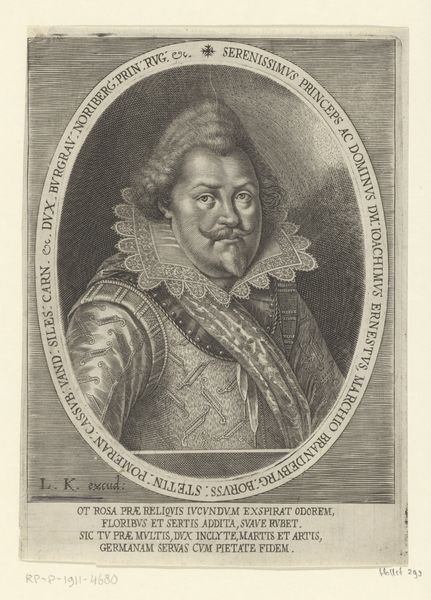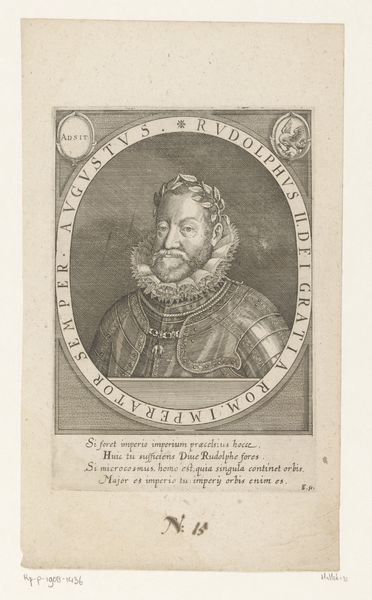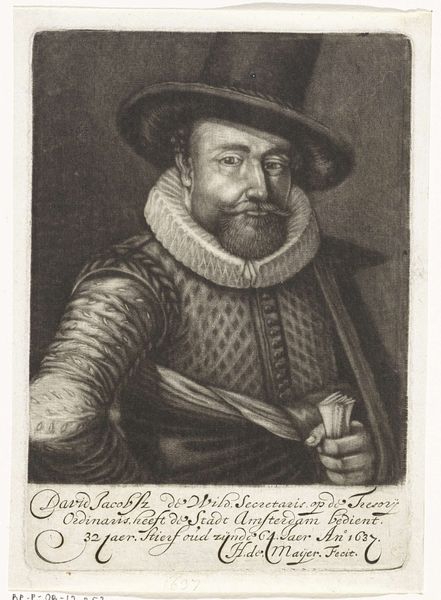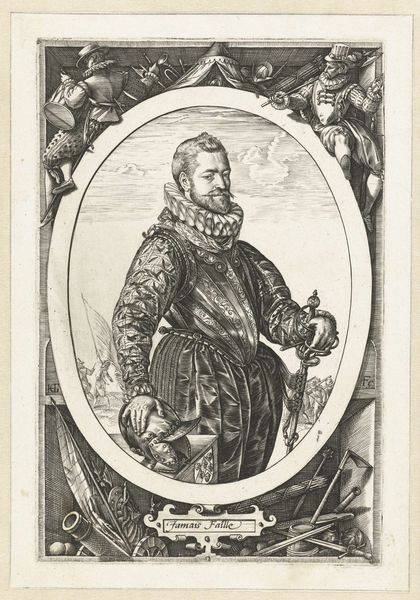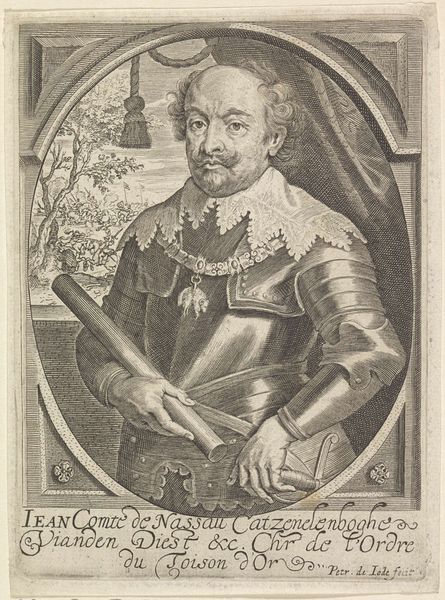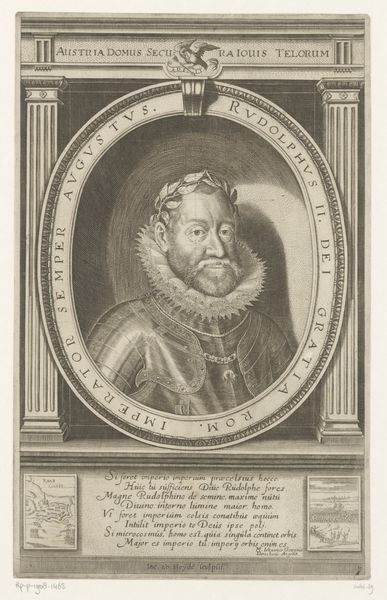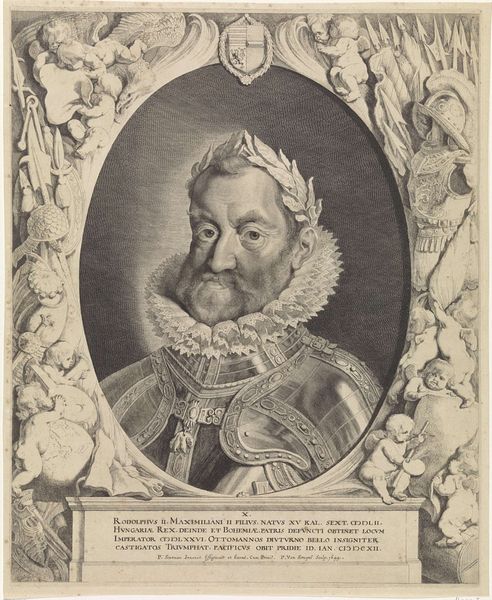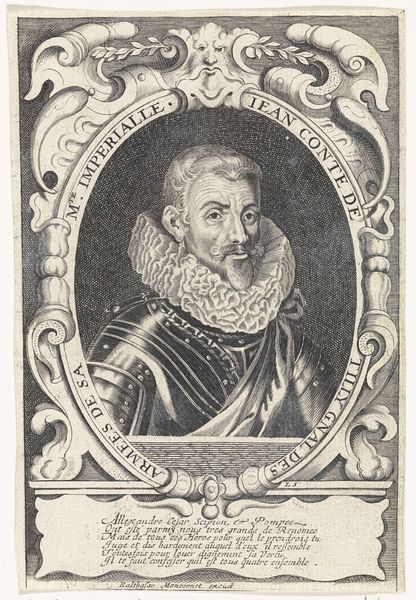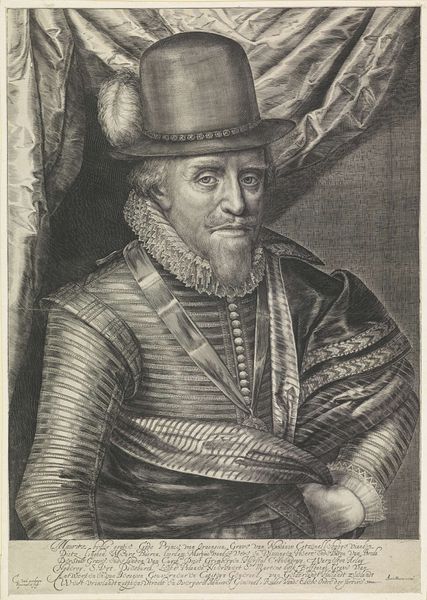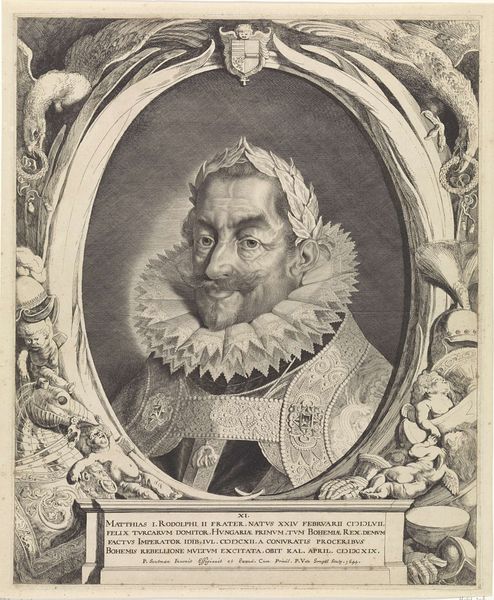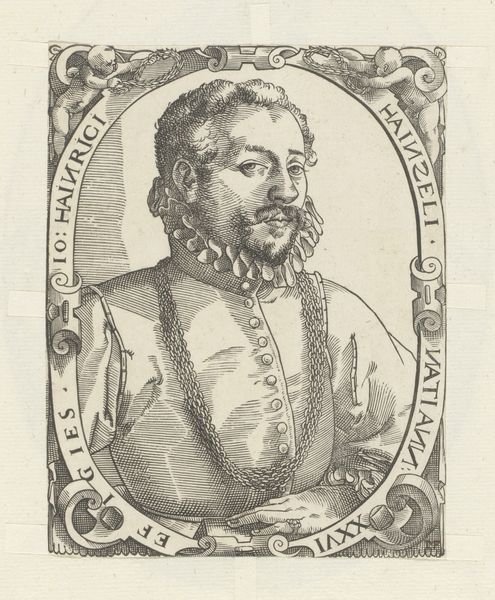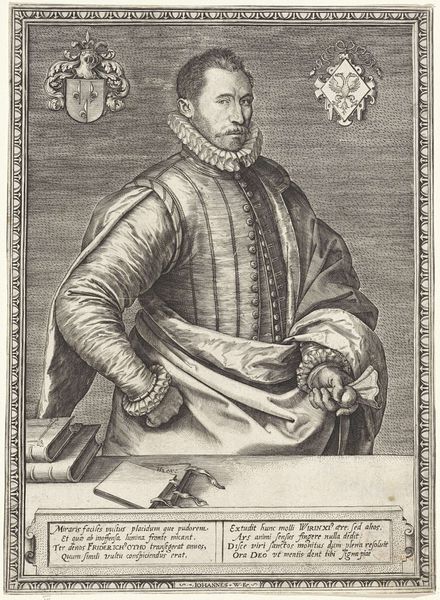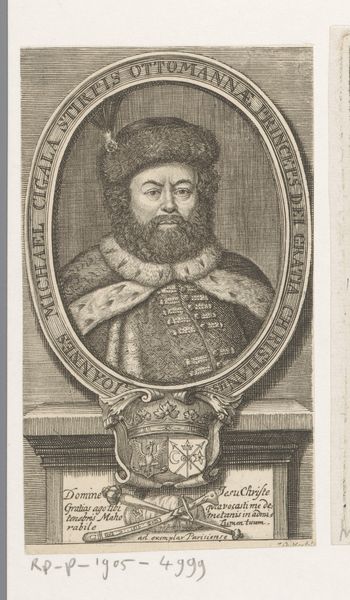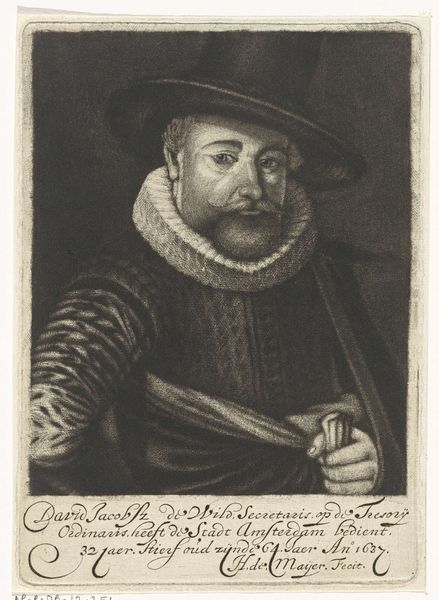
engraving
#
portrait
#
baroque
#
dutch-golden-age
#
old engraving style
#
portrait drawing
#
history-painting
#
engraving
Dimensions: height 215 mm, width 141 mm
Copyright: Rijks Museum: Open Domain
Curator: Look at the intricate details in this engraving, "Portret van Frederik Hendrik, prins van Oranje," dating roughly from 1621 to 1644. The artist was Joannes Sarragon and the work gives us insight into Dutch Golden Age portraiture through the lens of printmaking. Editor: My initial thought? Regal, yes, but almost… industrial. The way the lines are so deliberately etched, like a machined product, it seems far removed from the hand of the artist in its execution. There's a weightiness to it. Curator: Precisely. The technique, the material—engraving itself becomes part of the social context. These weren't unique artworks meant for elite consumption alone. Engravings facilitated the mass distribution of images, effectively shaping public perception of figures like Prince Frederick Henry. Think about the labour involved: the engraver, the printer, and then the vendors getting these into homes. Editor: A carefully cultivated image campaign then? The Prince strategically displayed in households, reinforcing his authority? And the selection of details - his attire, his confident gaze - are those things meant to convey more than just an aesthetic? Curator: Undoubtedly. Consider the Baroque style here. Not just ornamental, but employed to evoke authority, grandeur. The oval frame itself mimics the mirrors you would have seen within court interiors, so framing Frederick Henry both literally and metaphorically. What did his patronage actually look like? The kind of paper, ink, distribution networks all suggest the development of print media used to maintain specific ideologies and a burgeoning capitalist class. Editor: So, more than a portrait, this functions as a piece of political machinery. Distributing power, projecting a carefully tailored persona into homes and perhaps across regions beyond his immediate control. Curator: Exactly. It pushes us to question who controls the means of artistic production, and for what purpose. These images did, after all, play a role in consolidating the power of the Orange dynasty. Editor: Makes you rethink that regal composure as pure construction. A lot less organic. I’ll look at prints a little differently from now on. Curator: That’s exactly what engaging with art history should be, not just celebrating masterpieces, but uncovering the complex negotiations woven into the material.
Comments
No comments
Be the first to comment and join the conversation on the ultimate creative platform.
